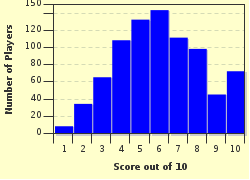Quiz Answer Key and Fun Facts
1. Architecture: In which of these places will you find a famous example of 20th century architecture closely resembling a collection of overlapping noses?
2. History: Of whom was it said that if her nose had been shorter the history of the world would have been different?
3. Languages: Which of these words, derived from Greek, describes a nose-related activity that is widely considered socially unacceptable?
4. Literature: The Ukrainian-born Russian author Nikolai Vasilievich Gogol wrote his short story "The Nose" in 1836. Which of these other works did it NOT inspire?
5. Mathematics: My hearing isn't what it used to be... whose mathematical theorem were my students discussing when I thought I heard the words "This bear on the hippo's nose has sequins from Mum Bear for another two rides"?
6. Painting: I saw a painting the other day - it was that one with the big-nosed face on sticks, by the chap with the moustache. Which artist's name has slipped my mind?
7. Philosophy: Which of these nasal-sounding persons, of the Rationalist school of philosophy, was a favourite reading choice of a famous fictional valet?
8. Politics: One of these nose-related electoral districts is not real - which one is it?
9. Science: Prosthetics is the science of artificial replacement body parts. Which one of these people was a famous scientist with a metal nasal prosthesis?
10. Sculpture: Which of these monumental sculptures has the greatest number of noses?
Source: Author
Mistigris
This quiz was reviewed by FunTrivia editor
agony before going online.
Any errors found in FunTrivia content are routinely corrected through our feedback system.

